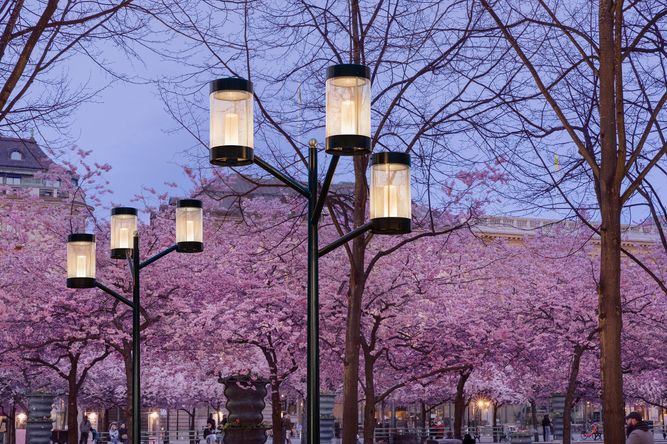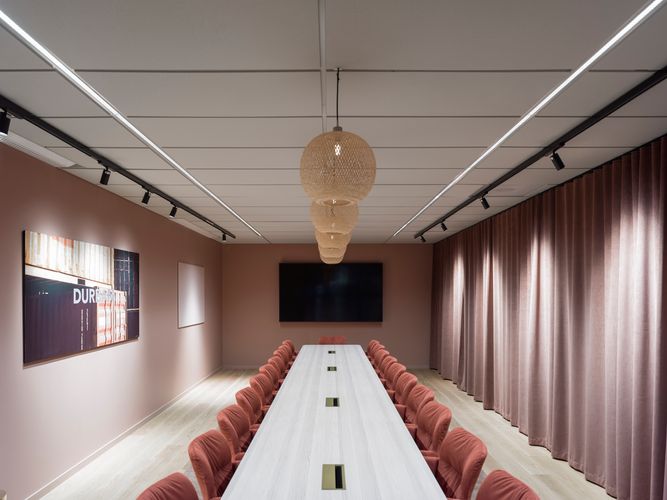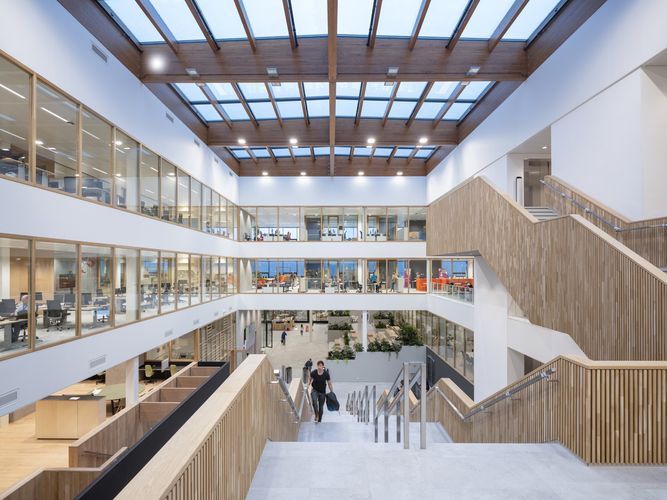Circular solutions
Our extensive experience and know-how drive our innovative approach. We want to be the leading sustainability actor in the industry and our ambition is to contribute to a better world through smart lighting solutions. We utilise the latest innovations to reduce our impact on the environment and climate, enabling a better environment and a brighter future for everyone.
Our ambition is to maximise the positive effects of our business operations along the value chain, while minimising our negative impact. We are working systematically to reduce our GHG emissions in the short and long term. The validation and approval of our climate target by the SBTi is an important part of this work.
By replacing the traditional linear view of economic systems and value chains with a circular perspective, we can deliver products and services that reduce resource use and waste. With our unique blend of local and regional brands, we can offer a customised approach to sustainable high-volume production. We can, and will, maximise energy savings with the latest LED technology and smart lighting. Our products should help reduce environmental and climate impact from a lifecycle perspective.


Objectives
- We will solidify the actual energy savings that can be made by a smart lighting installation working closely with selected existing customers.
- We will continue to expand the service business model by broadening the offering and strengthening the organisation.
- Our work with circular solutions aim to help us reach our short- and long-term climate targets in 2030 and 2045.
- We will set Smart lighting volume targets for a selection of brands in 2025.
- We will set a target for reducing the use of virgin raw materials in our products.
Our work with circular solutions
By considering criteria like energy efficiency, choice of material, duration and the lighting solution’s life cycle already in the innovation stage, we can take control over resource consumption, energy use and GHG emissions early on in the process and thereby reduce them. A circular approach is a prerequisite for us that allows our brands to design and develop solutions that meet the UN SDGs and the goals in the Paris Agreement.
Sustainability is deeply rooted in our operations and includes building an effective and resource-efficient supply and value chain. Through our net-zero journey we have learned a great deal about how our operations affect our business environment. We have chosen to transparently and continuously share our insights. One important lesson is that our largest climate impact comes from the GHG emissions that arise during the use phase of our products. That is why we are working continuously with finding and developing smart, energy-efficient solutions.We also work to reduce the emissions associated with our production and supply chain.
Thoughtful product design and active choices of material are essential for our development of products that help reduce environmental impact. We continuously review opportunities to avoid inefficiency, whether it pertains to water and electricity consumption, waste, transportation or anything else unnecessary. We develop our solutions to be used, reused, renovated, recycled and upgraded. Our work with circular solutions creates sustainable lighting that can be adapted to suit changing needs. The EU’s directive regarding the phase-out of traditional fluorescent lights with mercury entered into force 2023. This has led to significant demand for upgrading and adapting existing luminaires safely while retaining their quality. Most of our brands offer circular upgrades together with various additional services.

Highlighted actions
- We reduced our greenhouse gas (GHG) emissions by 34 per cent compared to 2021.
- We have set a target where 100 per cent of our solutions should be based on smart lighting by 2030.
- We have launched a service business model for indoor solutions which will allow us to work with our smart lighting customers to reduce their energy consumption during the whole life cycle.
- During the year, we have launched a number of new products with renewable materials such as hemp and wool as well as increase the share of recycled materials in several products.
Science Based Target initiative
To ensure that we are a successful and sustainable Group that contributes to the UN Sustainable Development Goals, the EU’s Green Deal and the Paris Agreement we have developed climate goals validated by Science Based Targets initiative (SBTi). This means that we will reduce our greenhouse gas emissions according to the 1.5 degree target from the Paris Agreement and become net-zero by 2045. Our targets were validated by SBTi during 2023.
Our climate roadmap
Lighting accounts for up to 15 per cent of global electricity consumption. By using the latest smart lighting solutions, users can reduce energy consumption up to 90 per cent. The lighting industry has significant opportunities to contribute.


